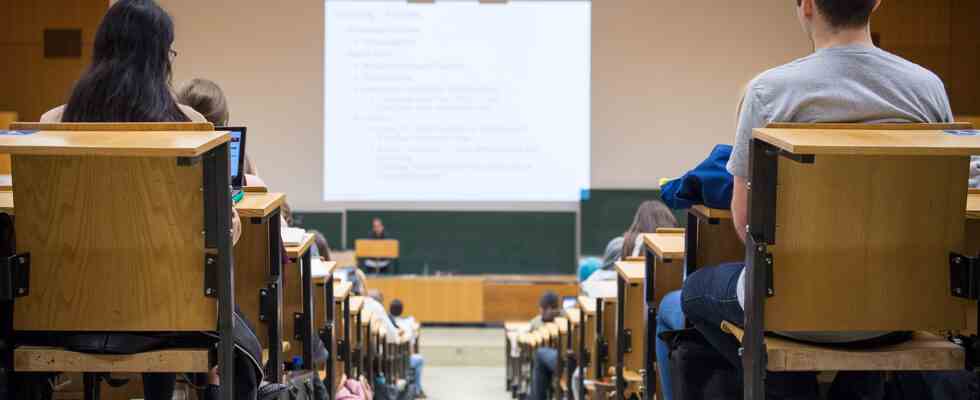Status: 11/16/2022 12:52 p.m
More than every third student in Germany was at risk of poverty last year. According to the Federal Statistical Office, one group in particular is affected: those who live alone or in shared apartments.
Those who study in Germany are much more at risk of poverty than the rest of the population. In 2021, 37.9 percent of students were at risk of poverty. For comparison: In the total population, this value was only 15.8 percent last year. This was announced by the Federal Statistical Office in Wiesbaden in the run-up to World Student Day. The risk of poverty was even higher among students who lived alone or exclusively with fellow students – according to this, 76.1 percent were considered at risk of poverty.
The Federal Office announced the figures on the occasion of World Student Day and referred to the first results of the survey on income and living conditions (EU-SILC). A person is therefore considered to be at risk of poverty if they have less than 60 percent of the median income of the entire population. In 2021, this threshold for a person living alone in Germany was 15,009 euros net per year or 1251 euros per month.
Mainly housing costs
Students had to dig deep into their pockets when it came to housing costs: the average share of housing costs in the available household income for students was 31.6 percent and thus significantly higher than the housing cost burden for the entire population at 23.3 percent.
Those who lived alone or in shared accommodation with other students had to pay a good half (51.1 percent) of their disposable income for housing costs on average. “If the housing cost burden is still more than 40 percent even after deducting any housing-related transfer payments that may have been received, households are considered to be overburdened,” according to the statistical office. Last year, almost a quarter of the students lived in households to which this applied.
Unexpected major expenses as a threat
According to the statisticians, how difficult the situation of many students is is also shown by the fact that 38.5 percent were already living in households last year – and thus before the energy crisis – that were not able to meet unexpected major expenses from their own financial means to lift – in the total population it was almost a third.
In September, the federal government presented a third relief package to compensate for the rapidly rising prices. The measures also include one-off payments to students. This is intended to mitigate additional burdens, such as a larger additional payment as a result of the sharp rise in energy prices.
Student Union raises the alarm
That’s not enough for the Deutsches Studentenwerk (DSW). The federal government must follow up, said the DSW in one press release With. Direct aid and student loans must be improved. “Students are facing a dramatic social emergency this winter semester,” said Matthias Anbuhl, Secretary General of the DSW. “They are coming out of the corona pandemic financially and mentally on their gums – and in view of skyrocketing prices, they often don’t know how they are going to pay for electricity, gas and groceries.”
As a rule, the student budget is extremely tightly sewn, and this seam is now in danger of tearing. There is a great need for action, especially when it comes to student loans: the basic amount and flat-rate housing allowance would have to be increased and the social benefit automatically adjusted to inflation. That is the best anti-poverty measure.

